Contents
Remembering the fragrant, delicate taste of melon, many novice gardeners and gardeners dream of growing this yellow beauty on their own plot, in open ground, in a greenhouse. Among the variety of species, such as the Ethiopian, Collective Farm Girl, Aikido, Aman and others, the Altai melon variety occupies an honorable leadership position in terms of characteristics. Why is it so loved by gardeners, what are the features of growing this juicy berry with excellent taste, what problems can arise – you will learn about this from our article.
About the variety
The wonderful variety Altai melon was conceived by breeders as a species ideal for harsh climatic zones. It is early ripening, shows resistance to high humidity.
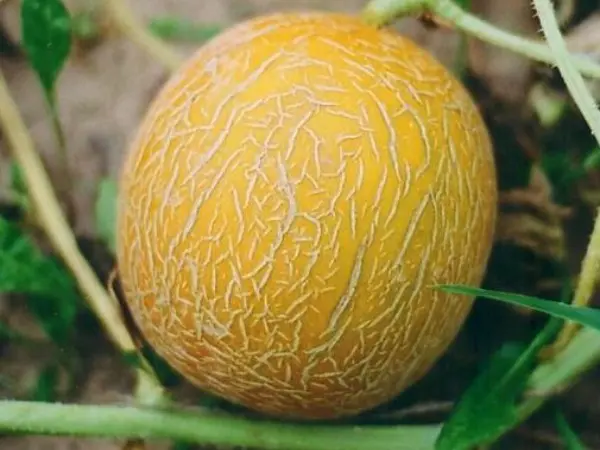
This melon is characterized by an elongated fruit shape. The weight of each fruit variety is usually about 2 kg. Such fruits surprise with fragrant pulp, which has received a delicate creamy color from nature.
Altai melon is very beneficial for health. It contains vitamins of groups A, B, C, E. It not only improves immunity and hemoglobin, but also has a good effect on the functioning of the genitourinary and cardiovascular systems, has a diuretic effect, and is indicated for anemia.
Outdoor cultivation
Many gardeners successfully grow this wonderful variety in open ground in their backyard. It is preliminarily prepared for planting: they dig and loosen the soil, lay high-quality hay in a couple of layers. Having planted seedlings, they must be protected with a film. After about June 20, the film should be removed, and the plantings should be well watered. It is permissible to apply fertilizer only from now on. Simple ash has proven itself well in this regard. Do not forget to cover the beds with a film at night during the ripening period. Already at the end of August, you will be able to enjoy juicy fruits that were grown in the open field.
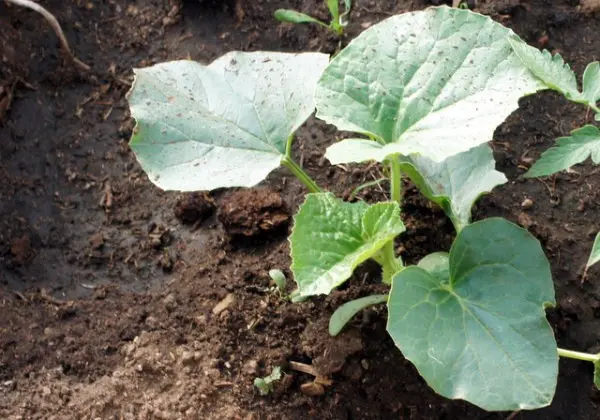
Remember that this melon variety responds well to growing in warm soil, while the site must be protected from wind and drafts.
If the soil on your site turned out to be clayey, it is recommended to “fluff” it with river sand. It should be taken about half a bucket per 1 square meter.
In the greenhouse
Experts advise transferring pots with seedlings to the greenhouse somewhere at the end of May, where they need to be planted after a couple of weeks. The depth of such plantings should not exceed 5 cm. A distance of 1 meter must be left between crops.
In order to reliably protect the seedlings of this variety from possible freezing until it forms a strong root system, it is better to grow in a shelter created using a film.
To prevent the foliage from starting to wilt, water your melons regularly and adequately.
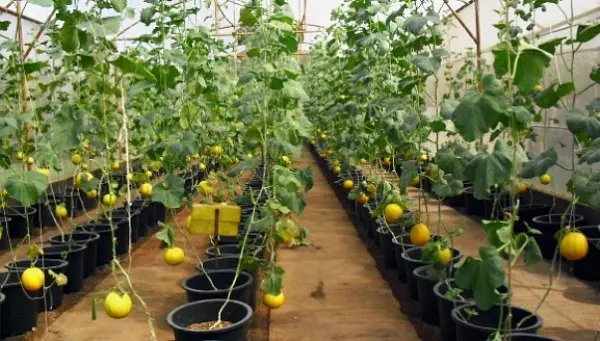
Fertilizers must be applied so that the culture fully grows and develops. It is advised to do this once every 1 days. Fertilizers must be applied to the soil all the days that the plant grows intensively.
Do not forget to ventilate the greenhouse, because this variety, like many others, really needs fresh air. It is best to open a greenhouse for a while when the weather is pleasantly sunny and warm.
Growing in beds
Before you plant a melon of this variety and grow it, you need to properly prepare the seed. To do this, it is dipped in a 2% saline solution.
For growing viable seedlings, containers with a diameter of 7 cm are perfect. The earthen substrate is made from 1 part of peat and 1 part of soddy soil, as well as 2 parts of humus. After all the seeds are planted in pots with such a mixture, they are covered with cling film on top.
Growing seedlings should be carried out in a sufficiently warm room. It must not be allowed to dry out, since the quality of the future culture will necessarily suffer as a result. To get strong sprouts, it is recommended to maintain the temperature regime at 18 degrees Celsius. Irrigation with water at room temperature is also needed.
If the sprouts look weak, you can water them with fertilizers that contain enough nitrogen. Do not forget about the normal lighting system.
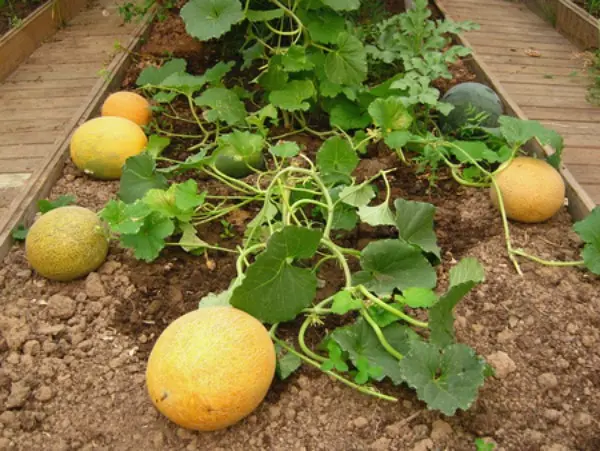
Landing on the beds is usually done when the seedlings have 3 full leaves. The earth in the beds is covered with humus. In the center of each of them, a trench should be formed, the depth of which will be about 30 cm. It must be filled with sawdust and leaves. The garden beds are also being irrigated.
In order for seedlings to be planted in normally heated soil, it is preliminarily covered with a dense black film.
Fighting diseases and pests
Most often, fruits of this species, like many others, overcome the following ailments – fusarium, powdery mildew and copperhead.
It is realistic to recognize Fusarium by its characteristic features: the foliage changes its usual color, becomes grayish and becomes covered with unpleasant spots. Experts call the cause of Fusarium a harmful fungus that penetrates the roots of the culture. If you do not help her in time, she will die after a couple of days. Planting crops annually in different places, autumn plowing, seed treatment with a solution of 40% formalin before planting in the ground are considered effective methods of controlling the disease. You can also save the plants by irrigating in normal quantities, if you loosen the furrows, destroy the affected gourds by burning, and treat the plantings with potassium chloride in liquid form.
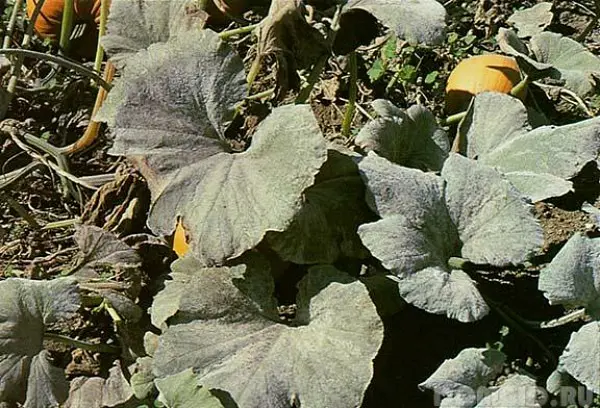
Powdery mildew can often attack your favorite crops. If you do not fight the disease, the death of plants is also inevitable. It is realistic to recognize the disease by the spots located at the bottom of the leaf plate, which eventually spread to other areas of the culture. To cure their favorite melons from powdery mildew, gardeners have successfully used the method of crop rotation on the site for many years. It is also important to get rid of diseased specimens in a timely manner. Spraying with sulfuric wettable powder also helps when the first outbreaks of the disease are noticed. This procedure must be repeated after waiting 10 days.
Copperhead, which is also called anthracnose, is manifested by the presence of brown spots on the surface of the leaves. They most often change and begin to dry out. The lashes become much thinner, break off easily. The fruits become irregular in shape, and later begin to rot. In the treatment of this ailment, ground sulfur and Bordeaux liquid have proven themselves to be excellent, which should be used to process your favorite crops.
In addition, melons are often attacked by harmful insects such as tobacco thrips, spider mites and aphids. You can get rid of parasites by using one of the modern effective drugs, which include Fitoverm, Kemifox, Maxi and others.
Video “Altai melon in the greenhouse”
See what crop of Altai melon was harvested using the greenhouse method of cultivation.









